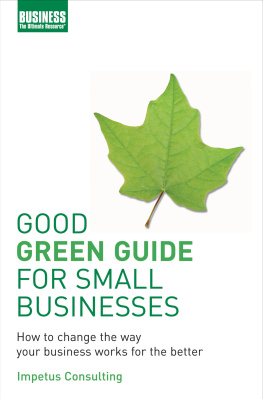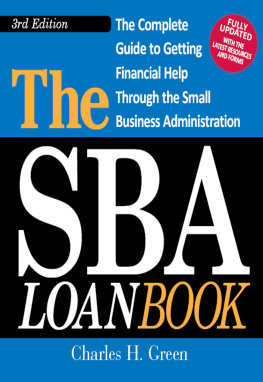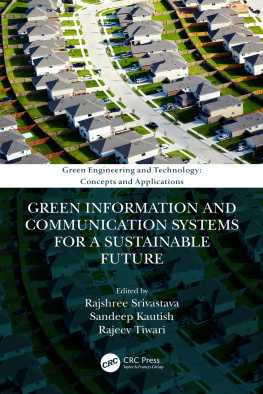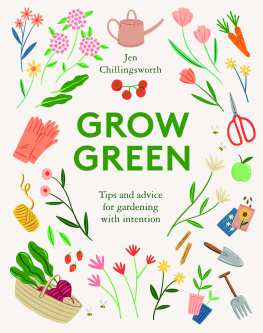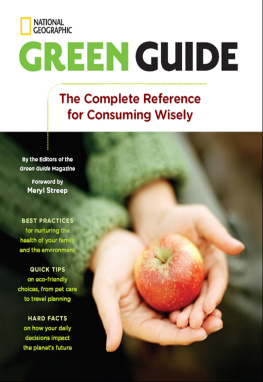Good Green Guide for
Small Businesses
How to change the way your
business works for the better
Impetus Consulting Ltd
A & C Block London
First published in the United Kingdom in 2008 by
A & C Black Publishers Ltd
36 Soho Square
London
W1D 3QY
www.acblack.com
Copyright Impetus Consulting Ltd, 2008
All rights reserved; no part of this publication may be reproduced, stored in a retrieval system, or transmitted by any means, electronic, mechanical, photocopying or otherwise, without the prior written permission of the Publisher.
No responsibility for loss caused to any individual or organisation acting or refraining from action as a result of the material in this publication can be accepted by A & C Black Publishers Ltd or the authors.
A CIP record for this book is available from the British Library.
eISBN: 978-1-40810-561-0
This book is produced using paper that is made from wood grown in managed, sustainable forests. It is natural, renewable and recyclable. The logging and manufacturing processes conform to the environmental regulations of the country of origin.
Design by Fiona Pike, Pike Design, Winchester
Typeset by RefineCatch Ltd, Bungay, Suffolk
Printed and bound in Great Britain by Martins the Printers Ltd, Berwick upon Tweed
Contents
Thank you to the team at Impetus who contributed to this book: Dave Barton, Mandi Dyke, Alex Fenech, Flo Greaves, Zoe Holliday, Emma Jones, Rachael Knowland, Kelly Lee, Bindi Patel, Will Rivers, Jacquie Taylor, Keith Von Tersch, Joanne Wade and Louise Wollen.
We would also like to thank the individuals who provided our case studies, Steve Clark at Oaklands Garden Centre, David Wheeler at Manchester Rusk Company and Yasmin and Bruce Halai-Carter at First Impressions Last Longer, for sharing their time and enthusiasm with us.
Finally, our thanks go to Lisa Carden and Camilla Garton at A&C Black, for their advice and support during the drafting of this book.
Sustainable development is a topic of increasing interest to us all. Environmentally, it is about making sure that we live our lives in such a way that future generations have at least as good an environment to live in and preferably a better one than we have now. The doom and gloom reporting of environmental disasters still happens, but we are increasingly also hearing about how people are acting to improve things. Government is committing the UK to reducing our carbon emissions by at least 60 per cent by the middle of the century; big businesses are very publicly stating their commitments to greening their operations, and communities, lead by places such as Ashton Hayes or the Transition Towns network, are coming together to take action on their emissions.
We all need to be involved in making our lives more sustainable: in our homes, our travel and our work. Some of the changes we may make are quite large, such as sourcing nearly one third of our electricity from renewable resources such as wind and wave power, and these will need government action. But others are small, and much more about what individuals can and should do.
Greening your business is about taking the steps you can to contribute to environmentally sustainable development. The first of these will be small, and a series of these small steps will get you a long way. When you have taken these, there are bigger things that you can do too.
If youre reading this, you must be thinking of greening your business. Perhaps you are already clear that you want to do this and are working out how, or perhaps you suspect that it might be a good idea but havent really thought about it much as yet. Or perhaps a friend bought you this book and, as yet, you are not at all convinced. Wherever you are starting from, this book can help you develop your business to be more sustainable to reduce your environmental impact and, in doing so, to respond to the expectations of your customers and your staff.
This book is aimed specifically at small businesses. To get the most from it, you may want to read it from cover to cover, or you may find it more useful to dip in to different sections to find the information and inspiration you need. If you are just starting out on greening your business, you will find ideas for simple, low-cost actions in the early parts of each of the main chapters; if you have already taken the easy steps and are looking for fresh ideas, look at the later sections of each chapter as they are aimed at you.
Throughout each chapter you will be directed to key sources of further information on the main topics within the chapter and to some of the main publicly funded sources of assistance. Each chapter ends with suggestions for a first step to take, and also a checklist of actions that you can use to keep an eye on your progress.
Throughout the book you will find case studies and snippets of information about what other businesses, small and not so small, have done. These will hopefully make our recommendations more tangible and also help to convince you that going green is not only the right thing to do but also something that you can do.
Chapter 1 considers why you should green your business. The issues of climate change and resource efficiency are explained, together with the benefits of tackling them: money, your reputation, a motivated workforce and future-proofing your business. It is aimed mainly at those of you who are a little sceptical but if you are already convinced you may nonetheless find it a useful resource when you are trying to enthuse your colleagues.
Chapter 2 explains how you can tackle climate change and resource efficiency by taking control of your use of energy, water and other resources. The chapter offers you simple steps that will cut out a lot of waste in the business, and then moves on to consider more involved engagement with this issue through techniques such as benchmarking, development and implementation of carbon management policies, and including environmental criteria in your purchasing decisions.
Chapter 3 offers you a tool that you can use to reduce your overall environment impact: the environmental check. The chapter first looks at how you can carry out a very simple check to help you focus your initial efforts where they can most easily have a significant impact. It discusses the different types of check you can carry out and considers the areas you might want to include in the check. Later sections of the chapter consider how you can in time build on this initial, simple check to work towards an accredited environmental audit should you wish to.
You cannot green your business on your own (unless of course you work alone). Chapter 4 is about how to make sure that your colleagues are working with you in your efforts. It offers practical suggestions of how to engage people, tap into their ideas, and keep them enthusiastic throughout the process of greening your business.
Chapter 5 looks at how you can promote your newly green credentials, to existing and potential customers, to current and future staff and to investors. The chapter covers the types of message you can use, ways to communicate them and ways to tailor them to particular audiences within and across these main groups.
Whatever we do now to tackle carbon dioxide emissions, there will be changes in the climate that result from emissions that have already happened. Chapter 6 offers you advice on how you can make sure your business is ready to deal with a changed climate and resilient to any increased risks that this will bring. It also highlights where there may be new business opportunities for you.
Moving to new premises or refurbishing your existing site offers an opportunity to significantly improve the sustainability of your operations. Chapter 7 looks in detail at the technologies you can invest in to reduce the energy and water demands from your buildings, and also the approach to take should you be in the fortunate position of specifying a new building.
Next page
